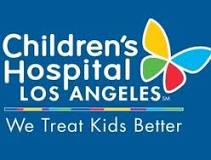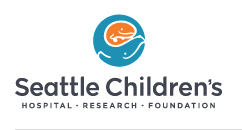Neurocognition in Congenital Central Hypoventilation Syndrome (CCHS)
| Status: | Recruiting |
|---|---|
| Conditions: | Insomnia Sleep Studies, Brain Cancer |
| Therapuetic Areas: | Oncology, Psychiatry / Psychology |
| Healthy: | No |
| Age Range: | 3 - 85 |
| Updated: | 7/11/2018 |
| Start Date: | January 2016 |
| End Date: | December 2035 |
| Contact: | Summer Fair |
| Email: | srfair@luriechildrens.org |
| Phone: | 312-227-3300 |
Neurocognitive Outcome as a Metric for Evaluating Therapeutic Intervention and Treatment Mechanisms in Congenital Central Hypoventilation Syndrome (CCHS): A Multi-Site Study Using The NIH Toolbox
Congenital central hypoventilation syndrome (CCHS) is a rare disorder of autonomic and
respiratory regulation that frequently alters oxygen delivery to the brain. In CCHS,
neurocognitive function has been of great concern because of the potential for repeated
hypoxemia and hypercarbia in activities of daily living in addition to hypoventilation with
related hypoxemia and hypercarbia during sleep. As the world's leading referral center for
CCHS, the Center for Autonomic Medicine in Pediatrics (CAMP) is engaged in ongoing research
to identify factors that impact neurocognitive performance in patients with CCHS in order to
optimize clinical management and improve long term neurocognitive outcomes.
The purpose of this IRB-approved research study is to implement the NIH Toolbox as a standard
measurement of cognitive health in patients with CCHS. Further, the study aims to determine
how intrinsic and extrinsic disease factors such as age at diagnosis, PHOX2B mutation type
and genotype, and nature of past and present artificial respiratory intervention affect the
NIH Toolbox Cognitive scores of individuals with CCHS. Eligible participants will complete a
45-minute NIH Toolbox assessment and parents (or adult participants) will complete an
associated, 15-minute Research Electronic Data Capture (REDCap) questionnaire.
respiratory regulation that frequently alters oxygen delivery to the brain. In CCHS,
neurocognitive function has been of great concern because of the potential for repeated
hypoxemia and hypercarbia in activities of daily living in addition to hypoventilation with
related hypoxemia and hypercarbia during sleep. As the world's leading referral center for
CCHS, the Center for Autonomic Medicine in Pediatrics (CAMP) is engaged in ongoing research
to identify factors that impact neurocognitive performance in patients with CCHS in order to
optimize clinical management and improve long term neurocognitive outcomes.
The purpose of this IRB-approved research study is to implement the NIH Toolbox as a standard
measurement of cognitive health in patients with CCHS. Further, the study aims to determine
how intrinsic and extrinsic disease factors such as age at diagnosis, PHOX2B mutation type
and genotype, and nature of past and present artificial respiratory intervention affect the
NIH Toolbox Cognitive scores of individuals with CCHS. Eligible participants will complete a
45-minute NIH Toolbox assessment and parents (or adult participants) will complete an
associated, 15-minute Research Electronic Data Capture (REDCap) questionnaire.
CCHS is a genetic autonomic nervous system disorder caused by heterozygous mutations in the
PHOX2B gene. 90-92% are caused by polyalanine repeat expansion mutations (PARMs) with 4 to 13
additional alanines on the affected allele in the 20 alanine repeat region of exon 3
(resulting genotype is 20/24-20/33). The remaining 8-10% of PHOX2B mutations are non-PARMs
including missense, nonsense, frameshift or stop codon mutations. And less than 1% of CCHS
patients are heterozygous for a large deletion eliminating the entire PHOX2B gene and
potentially other neighboring genes. Different causative mutations vary in the level of
associated protein dysfunction, leading to variability in the severity of the CCHS phenotype,
and potentially in the severity and frequency of resulting neurocognitive insult. Severe
cyanotic breath-holding spells and prolonged sinus pauses are two phenotypic features of CCHS
known to alter regional blood flow/oxygen saturation to the brain (near-infrared
spectroscopy; personal communication 2018). The fact that both of these phenotypic
presentations are associated with particular PHOX2B genotypes suggests that genetic factors,
intrinsic to CCHS pathology, might influence neurocognitive outcomes.
A recent report suggests that a number of extrinsic factors might also affect neurocognitive
performance in patients with CCHS with later identification and less than conservative
management in terms of artificial ventilation. While all cases of CCHS require assisted
ventilation during sleep, some more severe cases require 24-hour/day artificial ventilation.
Methods of assisted ventilation differ case-by-case and are chosen based on several factors,
including the patient's level of alveolar hypoventilation, physician recommendation, and a
family's ability to provide the recommended support. While these mechanisms are all meant to
ensure optimal ventilation, the level of physiological oxygen stability and the stability of
carbon dioxide levels provided with each varies. Thus, methods of respiratory assistance are
likely to influence neurocognitive outcomes.
Currently, there is no standard mechanism for examining the neurocognitive impact that
intrinsic pathology (PHOX2B genotype) and extrinsic factors (age of diagnosis and method of
respiratory assistance) have on CCHS patients across age groups and between sites. In order
to establish such a standard, this study aims to use a brief and reliable cognitive battery
called the NIH Toolbox at multiple sites. The NIH Toolbox was developed to standardize
evaluations in specific clinical populations for investigations of neurological development
and change, disease recovery, and therapeutic interventions. The Toolbox consists of a series
of cognitive assessments of executive function, attention, memory, and language designed for
broad use across age groups from childhood to adulthood.
Participants in this study will initially be recruited during clinical visits at the Ann &
Robert H. Lurie Children's Hospital of Chicago, Seattle Children's Hospital, and Children's
Hospital Los Angeles as well as at meetings of the CCHS Family Network. All participants will
complete a 45-minute NIH Toolbox cognitive assessment that is administered on an iPad by
trained study staff. Additionally, parents (or adult participants) will complete a simple,
15-minute, electronic REDCap questionnaire designed to obtain basic information including
PHOX2B genotype, age of CCHS diagnosis, past and present artificial ventilation interface
(example mask, tracheostomy, etc.), past and present mode of artificial ventilation (positive
pressure ventilator, negative pressure ventilator, phrenic nerve-diaphragm pacers),
phenotype, and disease history. After initial participation, study subjects will complete the
Toolbox and questionnaire at annual clinic visits or potentially at CCHS Family Network
meetings to allow for longitudinal data collection.
The study will validate the NIH Toolbox as an assessment of cognitive performance and
longitudinal cognitive outcomes in CCHS patients. Additionally, the study will characterize
the effect of intrinsic and extrinsic disease factors on the neurocognitive outcomes of
affected individuals in order optimize care for CCHS patients.
PHOX2B gene. 90-92% are caused by polyalanine repeat expansion mutations (PARMs) with 4 to 13
additional alanines on the affected allele in the 20 alanine repeat region of exon 3
(resulting genotype is 20/24-20/33). The remaining 8-10% of PHOX2B mutations are non-PARMs
including missense, nonsense, frameshift or stop codon mutations. And less than 1% of CCHS
patients are heterozygous for a large deletion eliminating the entire PHOX2B gene and
potentially other neighboring genes. Different causative mutations vary in the level of
associated protein dysfunction, leading to variability in the severity of the CCHS phenotype,
and potentially in the severity and frequency of resulting neurocognitive insult. Severe
cyanotic breath-holding spells and prolonged sinus pauses are two phenotypic features of CCHS
known to alter regional blood flow/oxygen saturation to the brain (near-infrared
spectroscopy; personal communication 2018). The fact that both of these phenotypic
presentations are associated with particular PHOX2B genotypes suggests that genetic factors,
intrinsic to CCHS pathology, might influence neurocognitive outcomes.
A recent report suggests that a number of extrinsic factors might also affect neurocognitive
performance in patients with CCHS with later identification and less than conservative
management in terms of artificial ventilation. While all cases of CCHS require assisted
ventilation during sleep, some more severe cases require 24-hour/day artificial ventilation.
Methods of assisted ventilation differ case-by-case and are chosen based on several factors,
including the patient's level of alveolar hypoventilation, physician recommendation, and a
family's ability to provide the recommended support. While these mechanisms are all meant to
ensure optimal ventilation, the level of physiological oxygen stability and the stability of
carbon dioxide levels provided with each varies. Thus, methods of respiratory assistance are
likely to influence neurocognitive outcomes.
Currently, there is no standard mechanism for examining the neurocognitive impact that
intrinsic pathology (PHOX2B genotype) and extrinsic factors (age of diagnosis and method of
respiratory assistance) have on CCHS patients across age groups and between sites. In order
to establish such a standard, this study aims to use a brief and reliable cognitive battery
called the NIH Toolbox at multiple sites. The NIH Toolbox was developed to standardize
evaluations in specific clinical populations for investigations of neurological development
and change, disease recovery, and therapeutic interventions. The Toolbox consists of a series
of cognitive assessments of executive function, attention, memory, and language designed for
broad use across age groups from childhood to adulthood.
Participants in this study will initially be recruited during clinical visits at the Ann &
Robert H. Lurie Children's Hospital of Chicago, Seattle Children's Hospital, and Children's
Hospital Los Angeles as well as at meetings of the CCHS Family Network. All participants will
complete a 45-minute NIH Toolbox cognitive assessment that is administered on an iPad by
trained study staff. Additionally, parents (or adult participants) will complete a simple,
15-minute, electronic REDCap questionnaire designed to obtain basic information including
PHOX2B genotype, age of CCHS diagnosis, past and present artificial ventilation interface
(example mask, tracheostomy, etc.), past and present mode of artificial ventilation (positive
pressure ventilator, negative pressure ventilator, phrenic nerve-diaphragm pacers),
phenotype, and disease history. After initial participation, study subjects will complete the
Toolbox and questionnaire at annual clinic visits or potentially at CCHS Family Network
meetings to allow for longitudinal data collection.
The study will validate the NIH Toolbox as an assessment of cognitive performance and
longitudinal cognitive outcomes in CCHS patients. Additionally, the study will characterize
the effect of intrinsic and extrinsic disease factors on the neurocognitive outcomes of
affected individuals in order optimize care for CCHS patients.
Inclusion Criteria:
- PHOX2B mutation-confirmed CCHS diagnosis
- Speaks and reads English as a primary language
Exclusion Criteria:
- Unsuspected or unconfirmed CCHS
- Does not speak or read English as a primary language
We found this trial at
3
sites
Childrens Hospital Los Angeles Children's Hospital Los Angeles is a 501(c)(3) nonprofit hospital for pediatric...
Click here to add this to my saved trials
225 E Chicago Ave
Chicago, Illinois 60611
Chicago, Illinois 60611
(312) 227-4000

Phone: 312-227-3300
Ann & Robert H. Lurie Children's Hospital of Chicago Ann & Robert H. Lurie Children
Click here to add this to my saved trials
Seattle Children's Hospital Seattle Children’s Hospital specializes in meeting the unique physical, emotional and developmental...
Click here to add this to my saved trials

